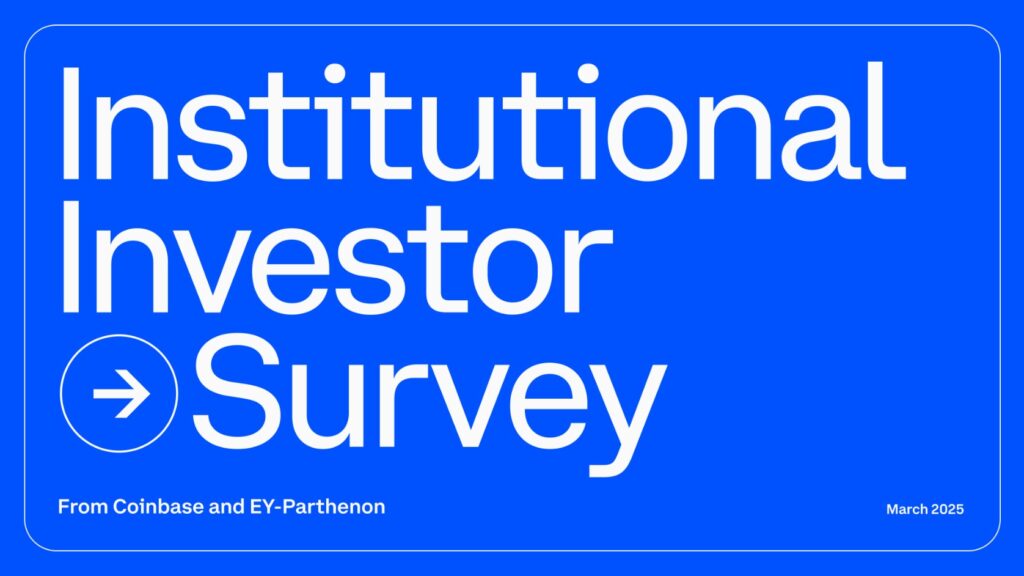Recent insights from a report by Coinbase and EY-Parthenon reveal a growing enthusiasm among institutional investors for cryptocurrency, with a remarkable 83% expressing intentions to increase their crypto holdings by 2025. This surge in optimism is becoming evident as nearly three-quarters of the surveyed firms are already diversifying beyond the well-known Bitcoin (BTC) and Ether (ETH), with many planning to allocate 5% or more of their portfolios to cryptocurrencies. The report highlights that investors believe cryptocurrencies present the best opportunity for attractive risk-adjusted returns in the coming years.
Conducted in January with over 350 institutional investors, the findings indicate a strong preference for altcoins, particularly XRP (XRP) and Solana (SOL), demonstrating a shift toward digital assets apart from mainstream coins. The potential approval of exchange-traded funds (ETFs) dedicated to these altcoins could further enhance institutional participation in the crypto market. With asset managers anticipating regulatory green lights from the US Securities and Exchange Commission for numerous proposed altcoin ETFs, momentum is mounting. Bloomberg Intelligence suggests that SOL, LTC, and XRP are among the frontrunners for imminent approval.
“Institutions are attracted to DeFi for myriad reasons, citing derivatives, staking, and lending as the use cases they are most interested in.”
In an exciting development, the Chicago Mercantile Exchange (CME) recently launched futures contracts tied to SOL, marking a significant milestone in institutional adoption of altcoins. Beyond traditional cryptocurrencies, the report also points to the increasing interest in stablecoins, with 84% of respondents either holding or considering stablecoin investments. Institutions are tapping into stablecoins for diverse applications, such as facilitating transactions, generating yields, managing internal cash, and making external payments.
While only 24% of institutional investors currently engage with decentralized finance (DeFi) platforms, forecasts suggest that this number could jump to nearly 75% within the next two years. As institutions explore DeFi, they’re drawn to its offerings like derivatives, staking, and lending, as well as opportunities for cross-border settlements and yield farming. This evolution in the cryptocurrency landscape reflects a broader shift towards innovation and institutional involvement in the digital asset space.
Institutional Investors’ Growing Confidence in Cryptocurrency
According to a recent report by Coinbase and EY-Parthenon, institutional investors are showing increasing optimism towards cryptocurrency, indicating a significant shift in the financial landscape.
- Majority Planning to Increase Crypto Investments:
- 83% of institutional investors intend to increase their cryptocurrency allocations by 2025.
- Nearly 75% currently hold cryptocurrencies beyond Bitcoin and Ether.
- Altcoins Gaining Popularity:
- XRP and Solana are the most favored altcoins among institutional investors.
- Approval of altcoin ETFs could further boost altcoin investments.
- Stablecoin Adoption:
- 84% of investors are either holding or considering stablecoins.
- Use cases include yield generation, foreign exchange, and payment facilitation.
- Growing Interest in DeFi:
- Currently, 24% of institutions are using DeFi platforms, with expectations to rise to nearly 75% in two years.
- Institutional interest is driven by derivatives, staking, and access to altcoins.
This growing institutional interest in cryptocurrencies and related technologies is poised to influence market dynamics and could offer new investment opportunities for individuals.
Institutional Investors Shift Focus to Altcoins and Stablecoins
The recent report by Coinbase and EY-Parthenon indicates a significant trend: institutional investors are becoming increasingly optimistic about cryptocurrency. With 83% of those surveyed expressing plans to increase their crypto allocations by 2025, this pivot is not just a fleeting moment; it’s shaping up to be a strategic shift in investment philosophy. Interestingly, while Bitcoin (BTC) and Ethereum (ETH) have long been the frontrunners, nearly three-quarters of the firms now hold a variety of other cryptocurrencies, suggesting a diversification away from these two primary assets.
Competitive Advantages
This bullish sentiment on altcoins and stablecoins highlights key competitive advantages for investors. Institutions see cryptocurrencies as a means to achieve superior risk-adjusted returns over the next few years. Particularly, assets like Solana (SOL) and XRP are gaining traction, especially as the potential for ETF approval by US regulators looms. The reported interest in altcoin ETFs could pave the way for a broader acceptance of these assets, while major derivatives exchanges like the CME launching futures contracts tied to SOL is a significant endorsement of altcoin viability.
Challenges Ahead
Who Stands to Benefit or Suffer?

















